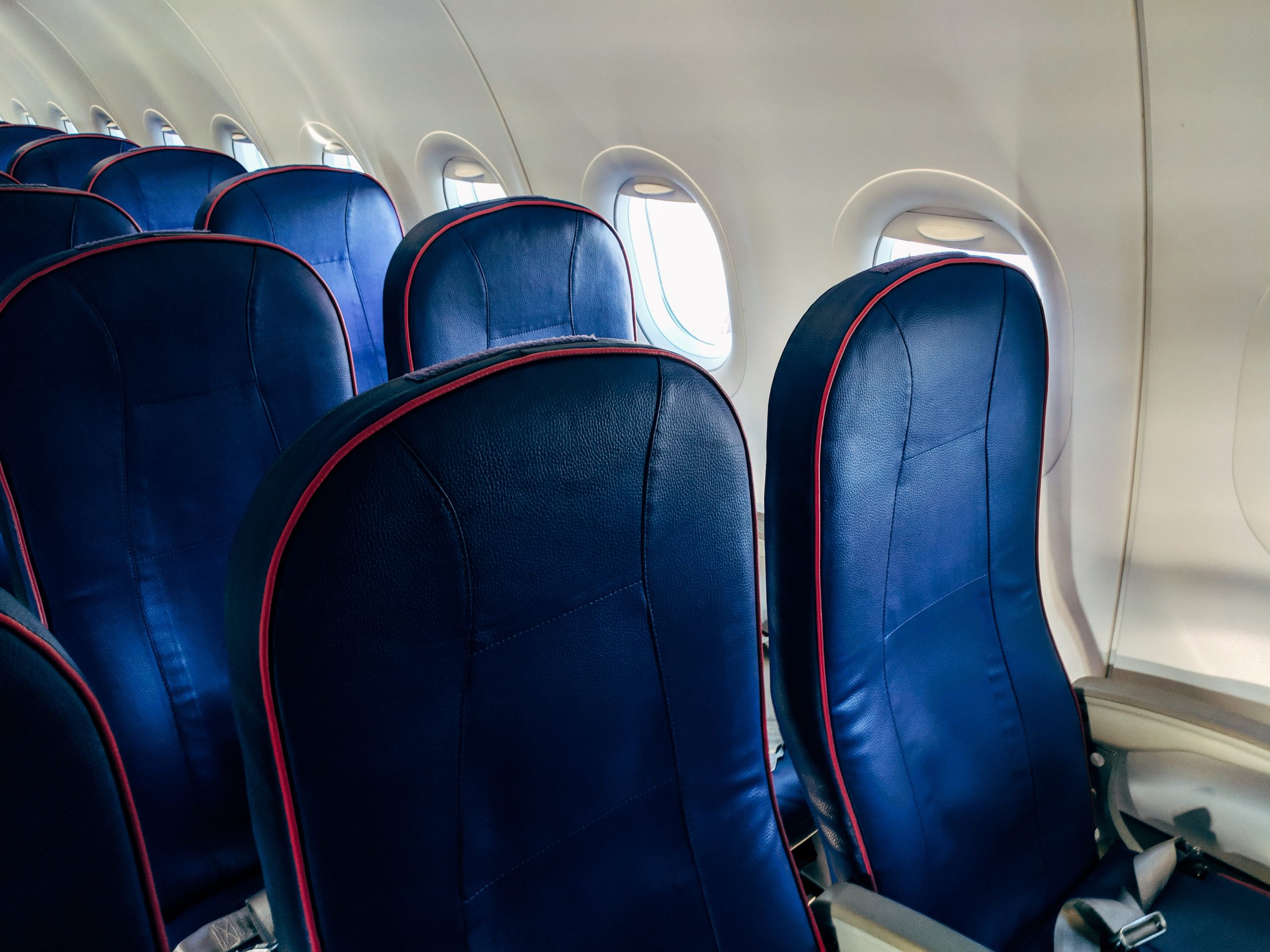
10 Apr How to Avoid Germs on a Plane
As a could-be medical pandemic, the coronavirus disease (COVID-19)—the respiratory disease first detected in Wuhan, China, at the end of December, which now has more than 82,000 confirmed cases worldwide—has incited pandemonium globally, specifically among travelers. After all, planes pose a unique risk for any disease contraction: Long flights result in longer times of potential exposure if someone onboard is sick and shared air makes it more difficult to avoid unwell passengers. As a result, concern over COVID-19 has led to canceled international trips.
The Centers for Disease Control and Prevention (CDC) has warned against all non-essential travel to China (the U.S. State Department has also issued a “Do Not Travel” warning to the country); suggested reconsidering travel to South Korea; and advised precautions for travel to Iran, Italy, and Japan due to outbreaks. People are, unsurprisingly, fearful: On Monday, a British Airways flight to Milan was delayed before takeoff when a passenger scared of coronavirus refused to fly. But it’s important to realize that, as of publishing, there are only 60 confirmed cases of COVID-19 in the U.S.—and 42 were among people evacuated from a Diamond Princess cruise ship that was quarantined in Japan. On Wednesday night, the CDC confirmed the first case of the disease not linked to travel.
“Having strict travel restrictions and surveillance of people who arrive from infected parts of the world has limited cases of COVID-19 in the US considerably,” says Robert Amler, M.D., dean of the School of Health Sciences and Practice at New York Medical College and former chief medical officer for the CDC. Plus, while COVID-19 is undoubtedly serious, other respiratory illnesses, namely the flu, have proven to pose far more of a risk to health this winter. Influenza has already taken the lives of at least 14,000 people in the U.S., while there have been no deaths in the country linked to COVID-19.
Ultimately, experts are still learning about COVID-19, but for now, the CDC notes that it likely spreads similarly to most other viruses, via close person-to-person contact and respiratory droplets. To stay healthy on your upcoming flights, no matter what you’re up against, take these seven precautions, which are effective in keeping many respiratory illnesses at bay. After all, says Dr. Amler, “the bottom line is, people don’t want to get infected regardless of what name you put on the virus.”
- Get the flu shot. There is no vaccine to prevent coronavirus but it’s not too late to get a flu shot, which can protect you against this year’s serious (and deadly) flu.
- Do your best to keep your distance from people who are visibly sick. On a plane, that’s easier said than done. The CDC defines “close” contact as within six feet of someone, and previous research suggests that sitting within two rows of someone with flu-like symptoms puts you at a 3.6 percent increased risk of getting sick with what they have. At the very least, make sure you’re out of a sneeze’s range. “When someone coughs or sneezes there are relatively large, visible droplets that are expelled from the nose and mouth that can land in someone else’s face, and that’s an entry into the body where the virus can then cause disease,” explains Dr. Amler.
- Skip the face mask. Typical, paper surgical masks only protect other people against your germs. They don’t offer you protection from everyone else, says Dr. Amler.
- Don’t touch your eyes, nose, or mouth with unwashed hands. These are the portals into your body for viruses.
- Wash your hands. Scrub with water and any soap for at least 20 seconds to stay safe and clean, suggests the CDC.
- Pack an alcohol-based hand sanitizer. Make sure it has at least 60 percent alcohol content, an amount that can neutralize germs. (Tried-and-true travel-friendly Purell will do the trick, as will something like Honest’s grapefruit-scented spray sanitizer.) While hand-washing is always experts’ number one tip when it comes to staying healthy, if you want to wipe down your tray table or armrest while flying for peace of mind, use a disinfectant with that same threshold of alcohol content.
- Be in the know. Staying up-to-date with travel notices and outbreaks can provide you current recommendations for travel and health tips. The CDC’s Coronavirus Disease 2019 Information for Travel is here and global cases are being tracked by Johns Hopkins here. If you’re concerned about an upcoming trip being affected by COVID-19, be sure to follow these 10 steps before rethinking your plans.
